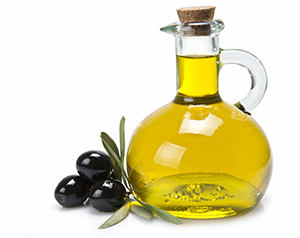Eating less saturated and trans fat is one of the best things you can do for your heart. Start by finding out which fats are better to use. Then always try to use as little "bad" fat as you can.
Why eat less fat?
-
Cutting down on the less healthy types of fats you eat can lower your blood cholesterol levels. This may help prevent clogged arteries from plaque buildup.
-
A low-fat diet can help you lose excess weight. Losing weight can lower your blood pressure. It can also reduce your chances of developing chronic diseases, such as heart disease and diabetes.
-
A diet low in saturated and trans fats may help reduce your risk for stroke and some cancers.
Unsaturated fat is most healthy
-
Unsaturated fat is the best fat to add to foods when needed.
-
Unsaturated fats come from plants. They include olive, canola, peanut, corn, avocado, safflower, and sunflower oils.
-
Liquid (squeezable) margarine is also mostly unsaturated fat.
-
In small amounts, unsaturated fat can even be good for your heart.
Saturated fat is less healthy
-
Try not to eat saturated fat. It raises your blood cholesterol levels.
-
Most saturated fat comes from animals. Foods, such as butter, lard, cheese, cream, whole milk, and fatty cuts of meat, are high in saturated fat.
-
Some oils are also saturated fats. These include palm and coconut oils.
Trans fat is least healthy
-
Also try not to eat trans fat whenever possible. Even if it's not listed on the food label, look for it in the ingredients in the form of partially hydrogenated oils (PHOs).
-
The FDA has listed PHOs as no longer "generally recognized as safe." They banned adding PHOs to foods as of 2020.
Other ways to add flavor
-
Sprinkle herbs on fish, chicken, and meat, and in soups.
-
Try herbs, lemon juice, or flavored vinegar on vegetables.
-
Add chopped onions, garlic, and peppers to flavor beans and rice.
-
Try the following ways to cook lean meats, fish, or poultry: bake, broil, roast, stew, or stir-fry.


